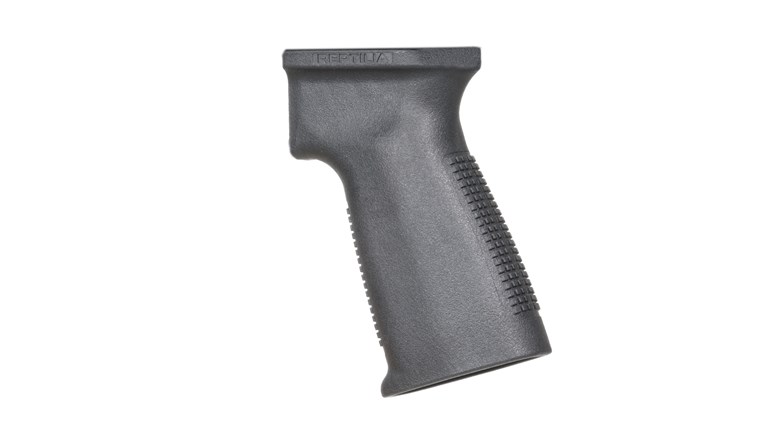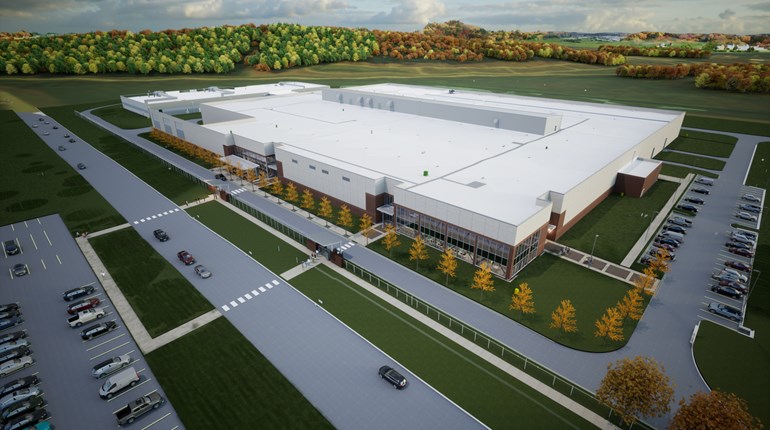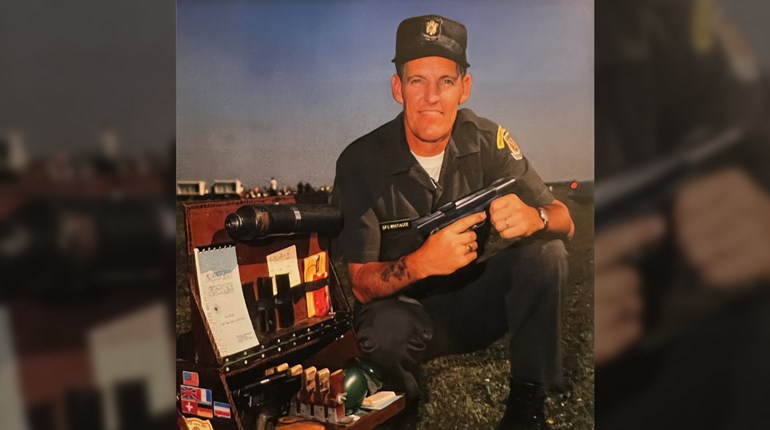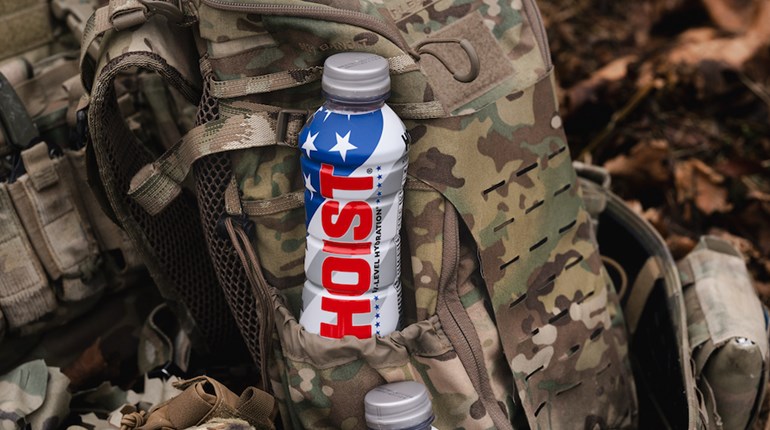
The strange new rifle was labeled "ASN"—a Russian acronym for Avtomat Spetsialnyi Nikonov. The soldiers at the show could give no meaningful information about it beyond the basic information on the placard. Shortly thereafter, data began to emerge indicating it was an advanced combat rifle, but its status remained a mystery. The Russian Ministry of Defense cleared up the mystery in 1995 by announcing that the ASN had passed all its troop trials and that it had been type classified as the "Avtomat Nikonova-94" (AN-94). The number "94" is the year the rifle was officially type classified and adopted for military service to replace the Kalashnikov-designed AK-47/AKM/AK-74-series rifles.

The Nikonov, like the Russian-issue Kalashnikovs, is a selective-fire rifle, meaning it is capable of semi- and fully automatic fire.
The genesis of the AN-94 may be traced to the adoption of the AK-74 by the Soviet military more than 30 years ago. At that time, the 5.45x39 mm cartridge of the AK-74 was a tacit acknowledgment by the Soviets of the effectiveness of high-velocity, small-caliber projectiles at normal battlefield ranges, which had been proven by the American 5.56 NATO-chambered M16A1. The 5.45x39 mm was derived from the M1943 7.62x39 mm cartridge, but the Soviet military was not completely satisfied by the overall performance of the AK-74. The Red Army probably realized the AK-74 represented the end of the practical development life of the Kalashnikov assault rifle design, and a new rifle would be required by the turn of the century. The primary requirement for this new rifle was that it achieve a probability of hit (or effectiveness) of one and one-half to two times that of the AK-74. The military also felt a reduction in recoil was necessary in order to improve hit probability.

Accordingly, a program was initiated to develop a new advanced-technology assault rifle to replace the Kalashnikov. The development program was nicknamed "Abakan" for a village in Siberia where testing was conducted. This led to the AN-94 being incorrectly designated Abakan when prototypes were first observed in the hands of Russian troops. Abakan was used by the Russians to generically refer to rifles being evaluated under the development program. According to Gennady Nikonov, designer of the AN-94, every official Soviet firearm designer submitted a candidate rifle for consideration, and no less than eight different models were tested in the development program before the ASN was type classified as the AN-94. Interestingly, when queried about the rifle in 1992, the usually plain-spoken Mikhail Timofeyevich Kalashnikov refused to comment. He was quoted as saying, "I don't feel I am entitled to give an assessment of the new product." Kalashnikov went on to say that his son Viktor had entered an unsuccessful design in the Abakan Competition, hence his reluctance to comment.
The AN-94 is a complete departure from any rifle ever developed by the Russian firearms industry and represents a significant improvement in performance. Moreover, the AN-94 very likely portends a change in Russian infantry tactical doctrine, as we shall presently see.
The AN-94 employs modern manufacturing techniques. The rifle's furniture is all made of polymer, as is that of the Kalashnikov AK-100 family, but there the similarity to the Kalashnikov ends. What appears to be a gas tube beneath the barrel of the AN-94 is actually a fixed rod extending from the stock that incorporates a guide for the rifle's firing unit (barrel/receiver assembly) at the front and a dual-purpose stud at its center. One purpose of the stud is to stabilize the rifle when on fully automatic fire. The barrel and guide rod tend to resonate on fully automatic and the rod and stud add weight to dampen the oscillation. The stud also prevents the rifle from sliding back and forth when it is locked into the firing port of an infantry fighting vehicle. The AN-94's gas cylinder is above the barrel underneath the handguard and is quite short. The entire operating mechanism is inside the stock, which is referred to in Russian documentation as a "carrier-stock." Barrel and receiver are integrated into a firing unit that reciprocates on guide rails inside the stock. The bolt carrier and bolt are carried by and operate inside the rifle's internal receiver.
Two internal buffers, one in the forearm and another at the rear of the receiver, are present on the AN-94. The forearm buffer not only absorbs shock, but also accelerates return travel of the firing unit as it moves forward in counter-recoil. The rear buffer boosts forward acceleration of the bolt carrier and prevents the receiver/firing unit from striking the rear of the stock as it recoils.

One of the key principles of the AN-94's operation is what the Russians refer to as "blow-back shifted pulse," or BBSP. This relates to the fact that the receiver and barrel assemblies reciprocate independently from the bolt and its carrier, although the latter reciprocate in the receiver. A simplified functional explanation of the two-round burst feature will clarify the BBSP principle. When the first round is fired, the entire barrel/receiver assembly begins moving to the rear, taking with it the bolt carrier and compressing the forward buffer. As the bullet passes the gas port, gas is bled off into the gas cylinder, driving the bolt carrier to the rear—unlocking the bolt, extracting and ejecting the spent case. The bolt carrier is moving much faster than the barrel/receiver assembly and impacts against the rear buffer, which in conjunction with the return spring propels it forward, temporarily inactivating the sear while stripping a fresh round from the magazine and chambering it. As the bolt locks, the sear is released and the second round is fired before the receiver completes its rearward motion. The bolt carrier and hammer begin their next cycle. In essence, the first two bullets have left the barrel of the rifle while the receiver is still moving to the rear and has not had a chance to impact the rear buffer. The AN-94 is therefore both recoil- and gas-operated. While the BBSP principle is not all that makes the AN-94 unique, it is the central feature that makes the dual cyclic rate possible.
According to Russian sources, reliability and maintenance are greatly improved over the AK-series. Though it is difficult to imagine that AK reliability could be improved upon to any degree, the Russians claim the AN-94's mean firings between failures is 40,000 rounds!
The AN-94's 1,800 round-per-minute burst is obtained each time the rifle's trigger is squeezed in fully automatic mode—so fast, the first two rounds have left the barrel before the rifle begins to recoil in the shooter's hands. The rifle automatically cycles down to 600 rounds-per-minute after the first two rounds are fired. To say that the AN-94 is different is understatement. Not only is the functioning unique, but so is the method of achieving it.
The AN-94's functioning can best be described and understood in terms of small arms cycles of operation. It is difficult to describe a unique firearm without having examined it. The technical description of the Nikonov AN-94 that follows is based solely on data provided courtesy of Izmash Joint Stock Company, not upon actual examination of an AN-94. It is based on the judgment of the author and is subject to change. Due to length considerations, we will focus here on automatic operation of the AN-94 rifle, as this captures the essence of its uniqueness.
To fire on fully automatic, the safety is set on "O," or "ogon" (fire in Russian.) and the selector is set to "AB," an abbreviation for "avtomaticheskiy," or automatic. This shifts the disconnector into contact with one of the shoulders of the trigger plate. The operator pulls the charging handle to the rear. As this is happening, a "special mechanism" carries out an operation called preliminary feeding, in which a round is apparently removed from the magazine without being chambered. Upon release of the charging handle, pressure of the return spring and rear buffer drive the bolt carrier and bolt forward, ramming the cartridge into the chamber. This operation is repeated every time the operating mechanism cycles.
Pulling the trigger moves the trigger plate on its axis, releasing the sear, which in turn releases the striker. The striker moves forward under pressure of its spring, strikes the primer and fires the first cartridge.
Driven by recoil, the barrel/receiver assembly (firing unit) move to the rear on guide rail(s) inside the carrier-stock and begin to compress the forward buffer spring. The bullet passes the gas port, allowing gas to enter the gas cylinder, pressing the gas piston, thereby driving the bolt carrier and bolt to the rear. The bolt is cammed by the rearward-moving carrier to turn and unlock from the barrel extension. It should be noted that the entire barrel/receiver unit is moving to the rear as this function is taking place.
As the bolt continues to the rear, it extracts the spent cartridge case from the chamber. When the case clears the base of the chamber, it is thrown out the ejection port. As the bolt carrier and striker reach their rearmost positions, the return spring and rear buffer press them back forward to feed, chamber and lock the rifle for the second shot. The barrel/receiver unit is still moving to the rear. Since the unit is farther to the rear than when the first shot was fed and fired, the second cartridge has a shorter distance to travel from the magazine to the chamber, thereby assisting in the high rate of fire. This action is assisted by the "special mechanism" that pre-feeds each cartridge as the bolt carrier moves to the rear. As the barrel/receiver unit moved to the rear, the sear was temporarily deactivated and the striker was thereby allowed to impinge on the firing pin, firing the second shot.
The second round fires while the barrel/receiver assembly is still moving to the rear. The bolt carrier and bolt begin to move rearward inside the receiver driven by gas from the second cartridge. The sear is retained by the trigger plate and the disconnector and trigger plate return to their original positions. The rear buffer and return spring drive the bolt carrier back forward, ramming a fresh round into the chamber. The barrel/receiver unit is driven forward by the buffers and a return spring.

The AN-94 can be equipped with optical sights, specifically the 1L29 4X optical sights used on the AK-74, RPK-74 and PKM. The AN-94 also has unique "iron" sights. The rear adjustable peep sight is a "wheel" canted slightly to the right of horizontal with apertures at different elevations for adjusting aimed fire. Originally sighted out to 1,000 meters, accuracy with the light 52-grain 5.45 mm bullet is questionable. This "canted drum" arrangement is similar to that used by Heckler & Koch and others. Each aperture is marked on top with its sighted range and a quick twist by the shooter allows him to change his range quickly, even with gloves—unlike Western rifles which must be laboriously adjusted in order to make a change in sighted range. While the AN-94 sights do not allow for precise changes like those of the M16A2 rifle, they appear to be well-suited for the quick adjustments necessary for accurate combat firing.
The AN-94 appears to reflect a change in Russian infantry tactical thinking. First, the rifle's selector switch goes first to "semi," indicating that "semi" is the preferred firing position, the best for achieving accurate aimed fire. All AK rifles go first to "fully automatic," because massed automatic fire was paramount in Soviet small arms tactics at the time of the rifle's design in the late 1940s.
The sights of the AN-94 Nikonova also indicate this apparent change in doctrine. The rifle's fairly sophisticated system of iron "peep" sights allows for quick changes in battle-sight range. Moreover, the 1,800 round-per-minute, two-round-burst feature of the AN-94 is stated by Russian sources to be specifically intended to raise the probability of hit and to increase the effective range of the rifle. These requirements are the antithesis of fully automatic massed fire, which achieves hits by the sheer number of rounds fired toward the target.
In sum, Nikonov apparently developed a thoroughly modern replacement for the venerable Kalashnikov series of rifles that dominated not only Russia, but the world's military small arms for decades. There are other significant military rifles, but none can compare with the Kalashnikov series—with tens of millions of AK-47's, AKM's and AK-74's manufactured since 1947. For a time, it seemed that Mikhail Kalashnikov's landmark design would finally be overtaken by modern technology.
Whatever the reasons—cost, practicality, the fact the AK-pattern rifle remains more than serviceable, etc.—the Russian military never got around to the wholesale replacement of the Kalashnikov. The AN-94 is in service with some units of the Russian Army and various Russian police agencies, but its deployment is quite limited. Its groundbreaking design, however, makes it an important step in firearm evolution.






































